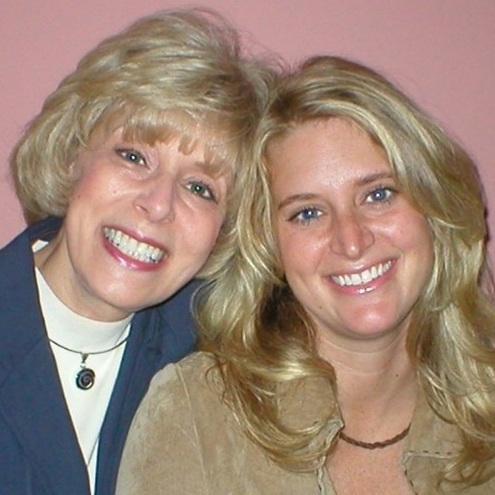Our History
 In the early 1990s, when Sue Byrnes’s daughter, Andrea, was diagnosed with lymphangioleiomyomatosis, better known as LAM, she immediately turned to medical literature for information and answers. Unfortunately, she found practically nothing – no scientific studies, no resources, no support group, and basically no hope. That day, Sue began her new life mission: to save her daughter’s life.
In the early 1990s, when Sue Byrnes’s daughter, Andrea, was diagnosed with lymphangioleiomyomatosis, better known as LAM, she immediately turned to medical literature for information and answers. Unfortunately, she found practically nothing – no scientific studies, no resources, no support group, and basically no hope. That day, Sue began her new life mission: to save her daughter’s life.
With the help of her husband Fran Byrnes, Sue established The LAM Foundation in 1995, with Francis McCormack, MD, University of Cincinnati pulmonologist, as its Founding Scientific Director serving until 2021.
Since then, The LAM Foundation has become the global leader in the quest to find effective treatments, and ultimately a cure, for LAM. Sue focused initially on locating and educating women with LAM. The Foundation brought researchers and patients together at annual conferences to share information and develop a research agenda for the disease, beginning with basic science studies to determine the molecular basis of the disease. Foundation members successfully lobbied Congress and the National Heart, Lung, and Blood Institute (NHLBI) to develop a National Institutes of Health (NIH) intramural program for LAM and a National LAM registry, including a tissue bank. Following studies funded by The LAM Foundation and the NHLBI that established the natural history and identified a drug target, the network of researchers and patients prepared to conduct clinical trials.
 Dr. McCormack and other researchers in the field became interested in the drug sirolimus, commonly used as an agent to prevent rejection of transplanted organs, as a potential treatment for LAM because it regulated LAM cell growth in the laboratory and in animal models. In 2007, they launched the Multicenter International Lymphangioleiomyomatosis Efficacy and Safety of Sirolimus (MILES) trial, funded by the NIH Office of Rare Diseases.
Dr. McCormack and other researchers in the field became interested in the drug sirolimus, commonly used as an agent to prevent rejection of transplanted organs, as a potential treatment for LAM because it regulated LAM cell growth in the laboratory and in animal models. In 2007, they launched the Multicenter International Lymphangioleiomyomatosis Efficacy and Safety of Sirolimus (MILES) trial, funded by the NIH Office of Rare Diseases.
The results of the MILES trial were groundbreaking, revealing that sirolimus was an effective suppressive treatment for LAM. As a result of the MILES Trial, sirolimus received FDA approval as the first treatment for LAM in May 2015.
The LAM story illustrates the potential of a relatively modest NIH research investment to produce transformative results in diseases where robust partnerships between researchers and patients exist. Within twenty years, a patient and research community elevated LAM from an asterisk in the medical literature to a juggernaut that has produced major scientific breakthroughs, including the identification of the LAM gene and the discovery of an effective treatment for the disease. The Institute of Medicine has cited the MILES trial as an exemplar of success in their report on CTSAs. The New England Journal of Medicine, Lancet Respiratory Medicine, the Clinical Research Forum, the National Organization of Rare Diseases, and the Wall Street Journal have all heralded the synergies between patients and investigators that have led to these remarkable advances.
We still have a lot of work to do. Conservative estimates suggest that there are approximately 8,000 – 12,000 patients with sporadic LAM and 80,000 – 160,000 patients with TSC-LAM worldwide.The LAM Foundation is driven to create awareness, promote advocacy, and find a cure for LAM. We are deeply grateful to all individuals with LAM who have helped advance our mission.